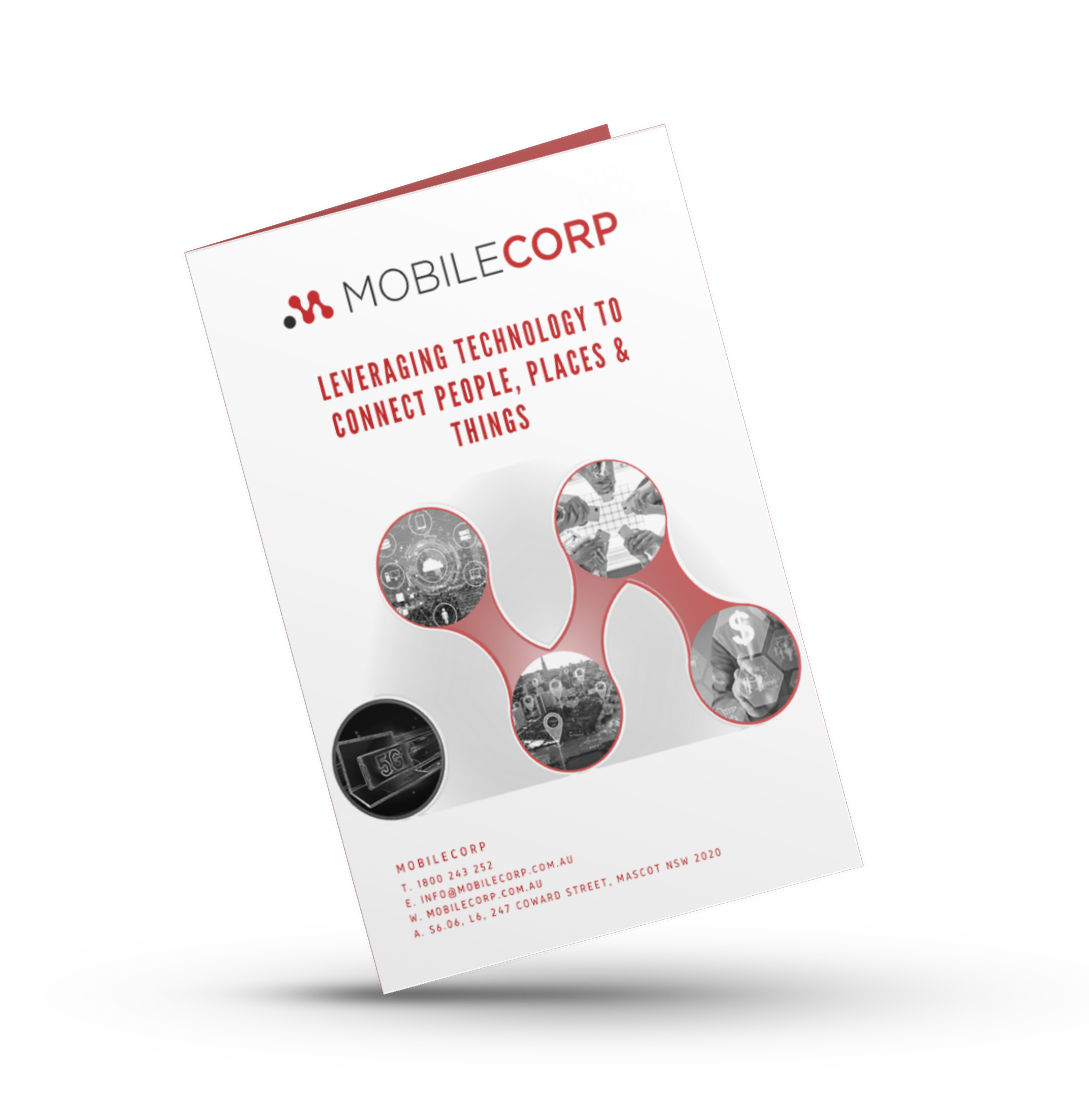Corporate mobility costs are a constant challenge for Australian business. Even before the Covid-19 remote working surge, expenditure predictably increased year-on-year. There is one certain way to save on mobility costs.
Six reasons why
Before we get to the one sure way to save on mobility costs, we need to recognise that not all cost increases are bad news.
Rising costs are a natural consequence of growth and of the new ways we utilise mobility in our business environment. However, we need to understand why costs are increasing if we want to take control.
Here are our top six reasons why enterprise and business mobility costs increase:
1. Growth in the number of devices
The number of employees utilising mobile devices to access the corporate network has surged with the shift to remote working. Post-pandemic many employees will continue to work from home at least in part. Even without the pandemic, the number of corporate devices has been steadily increasing as mobile phones and tablets have become a basic tool of trade.
2. Expanding business use cases
Mobility use cases are swiftly expanding. There is IoT and edge computing, instant 'pop-up' connectivity and, of course, remote working. The growth in business use cases equals more devices of various types distributed among the workforce or throughout the corporate environment. More devices equals increased costs in hardware, management and consumption. With the imminent arrival of 5G, mobility use cases are poised to accelerate.
3. Rate of data consumption
Data consumption continues to soar year on year, with the only saving grace being that carriers are including more data in plans and introducing unlimited or fair play plans. Regardless, excess data charges, and exceeding the shared data pool allowance remains a major source of corporate bill shock, and takes constant management from Australian organisations.
4. Lack of visibility
You can't stop what you can't see. Lack of visibility always enables expenditure - both deliberate and consequential. In organisations where line managers and employees have been given visibility of their monthly mobile bill, cost savings of 2-5 percent can be typical. This is due to employees discontinuing unauthorised use e.g. streaming movies or gaming, premium MMS or IDD calls; and also because employees become defacto auditors - pointing out errors they observe on their individual bills. It is a reality that costs will inevitably increase if no one is watching.
5. Insufficient cost control
Insufficient cost control is often a by-product of not having enough visibility of where costs are being incurred. Examples of insufficient cost controls include
- not having processes in place to audit expenses that are being incurred
- not reviewing or acting on data that tracks expenditure and flags spikes, anomalies, or unauthorised use
- not having policies in place that provide guidance about behaviours which incur expense
- not having policies in place that mitigate risk of asset turnover or loss
Even when policies and procedures are in place, if they are not enforced, they will not be worth the paper they are written on.
6. Employee Behaviour
Most employees have no intention of abusing or mis-using their corporate devices. However, employees are our biggest threat vector when it comes to security, longevity, and durability of mobile devices. Their usage behaviours also have considerable potential for increased expenditure.
The easiest way to save on your corporate mobility bill is...
Hands down the easiest way to secure immediate savings on your corporate mobility bill is to undertake a mobile fleet audit. A mobile fleet audit will almost universally deliver a guaranteed, positive Return on Investment.
An audit will intelligently dissect fleet composition, management processes, carrier billing and usage data. It will identify unnecessary expenditure, operational gaps, security risks and productivity barriers; and will provide recommendations to deliver a return on investment.
Goals of a Mobile Fleet Audit
Cost reduction or cost control are key reasons to undertake a mobile fleet audit but other goals can be to:
- inform carrier contractual negotiations
- support carrier dispute resolution
- accurately assign costs within the business
- allow expenditure forecasting and budgeting
- understand security threats at device and network levels
- identify barriers to end user experience and productivity
- refine employee usage policies and procedures
- inform future technology goals
The cost of a Mobile Fleet Audit
A mobile fleet audit will almost universally deliver a positive Return on Investment. This is particularly so for organisations with 100+ mobile devices. This number seems to be the tipping point where it is difficult for an internal resource to stay on top of the operational, financial and security of a mobile fleet.
Fleets from 50-100 services can also benefit from an audit particularly a carrier bill audit or carrier optimisation audit, as well as mobile device management and mobile security reviews.
The cost of an outsourced Mobile Fleet Audit will depend on its scope, deliverables, and the size of the fleet. This is not meant to be evasive on cost - in fact defining the scope, deliverables and size of the fleet will ensure an accurate cost can be quoted.
Scope: The scope of a fleet audit can be narrow - focused on a specific goal like a service audit or carrier billing audit prior to contract negotiations. It can also be broad - encompassing a comprehensive analysis of how the fleet is impacting on the business including telecom expense management , mobile lifecycle management, mobile device management, mobile security and end user management.
Deliverables: The cost of an audit will also be impacted by whether the deliverable is to provide a final written report outlining recommendations, or whether it will include implementation of the recommendations. These could include:
- retrieving and redeploying unassigned devices
- disconnecting or redeploying redundant carrier services (dependent on Early Termination Charges)
- compiling or cleaning an asset register
- claiming credits from carrier billing errors
- shifting employees to more cost effective carrier plans
Size of Fleet: Typically an audit will be charged as a flat one-off fee related to the number of SIOs (services in operation). Alternatively it can be a percentage of the savings realised from the audit.
What can be included in a Mobile Fleet Audit?
A mobile fleet audit can be either broadly extensive or narrowly focused. It can include examination of every aspect of corporate mobility or focus on specific topics including:
- device procurement analysis – how many devices are being purchased, is the pricing competitive, what about volume or bundling discounts, would accessories provide device longevity
- device lifecycle optimisation – are our devices fit for purpose, what is the longevity of a device, what is the refresh strategy, repair and replacement and end-of-life policy and security
- asset inventory analysis – who has what device, is the asset register up to date
- telco plan optimisation – are usage analytics being applied to ensure the best value plan is matched to each end user to optimise savings
- carrier service optimisation – are redundant services being identified and disconnected or redeployed
- carrier bill audit – Gartner estimates 80% of carrier bills contain errors; ensure you receive what you are paying for, and only paying for what you receive (read that again, slowly)
- financial management – end user cost visibility, cost centre allocation, accounting software data input
- end user digital experience audit – are processes supporting end user productivity, how efficient is onboarding and zero touch device deployment, repairs and replacements, remote device management, end user support
- device security– are endpoint devices secure or are they exposing the organisation to malware ; is there the ability to remote manage, lock and wipe compromised devices, ensure authorised access to the network
How to undertake a Mobile Fleet Audit
A mobile fleet audit can be undertaken internally or outsourced to an independent third party like MobileCorp. The benefits of internal resourcing versus outsourcing need to be weighed up. There are obvious benefits in outsourcing, including
- independent critical eye with no vested interest in the current structure or processes
- strategic knowledge of industry benchmarks and best practice
- detailed knowledge of carrier constructs including ever-changing corporate plans, rates,
- experienced auditors with knowledge of wide range of cost and operational risks
- vendor-agnostic evaluation of any existing or required software

To discuss how a mobile fleet audit could deliver clarity and cost savings to your organisation contact MobileCorp or read more here.

About MobileCorp
MobileCorp is an Australian communications technology company providing Managed Mobility Services, Mobile Device Management, Complex Data and IP Networks, and Unified Communications solutions. It has a proven track record providing solution architecture, build, deployment, and managed services for Australian enterprise and business.
Mobile Devices Michelle Lewis 12 May 2020
Related Posts
Popular Tags
- Mobility (81)
- Mobile Devices (79)
- Telstra (66)
- 5G (64)
- MobileCorp Managed Services (55)
- Mobile Network (34)
- Networks (34)
- Cradlepoint (32)
- Apple (29)
- MobileCorp (29)
- iPhone (25)
- Remote Working (23)
- Network (17)
- Covid-19 (16)
- Mobile Security (15)
- Wireless WAN (15)
- Cyber Security (14)
- UEM (14)
- MDM (11)
- Mobile Expense Management (10)
- Mobile Device Management (9)
- TEMs (9)
- Mobile Device Lifecycle (8)
- Cloud (7)
- Unified Comms (7)
- Unified Communications (7)
- Wandera (7)
- Android (6)
- Sustainability (6)
- Data Networks (5)
- Network Security (5)
- Samsung (5)
- Security (5)
- Digital Experience (4)
- IOT (4)
- Microsoft Intune (4)
- Blog (3)
- IT Services (3)
- Microsoft (3)
- Data (2)
- Government (2)
- Microsoft 365 & Teams (2)
- Retail (2)
- nbn (2)
- webinar (2)
- 4G (1)
- DAS (1)
- EMM (1)
- Emerging Technologies (1)
- Hosted Telephony (1)
- Managed Desktops (1)
- SD-WAN (1)
- Starlink (1)
- Telstra Services (1)
- WWAN (1)
- video (1)









